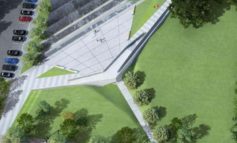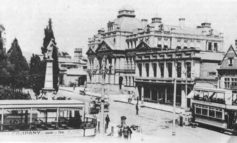Radhika Hettiarachchi |
The 26-year Sri Lankan war ended with a resounding military victory for the Government forces. At the end, the blitzkrieg saw indiscriminate shelling of a sliver of land in Mullaitivu district, where thousands of civilians were trapped, some held as hostages and human shields by the remnants of the LTTE.[1] The manner in which the war ended, without addressing the root causes or effects of conflict, lead to an official post-war nation building narrative that was built on the back of a ‘hero-myth’, leaning heavily towards a triumphalist and one-sided version of history.
Within this context, I believe that it was necessary to create opportunities for collecting and archiving public histories of individuals and groups, before memory fades and before the dynamic context of transition in Sri Lanka changed the way people chose to remember. The herstoryarchive.org (2012-2014) and Memorymap.lk (2015-2017) are both archives of public histories that resulted from this thought process. The stories of ordinary citizens’ experiences of violence and war related to conflict(s) add, contest, and layer the official histories of Sri Lanka with personal memorialisation.[2] Taking these memories beyond archiving, the projects seek to create dialogue on the ground about public history, dealing with the past and memorialisation. Through this, it seeks to contribute to the discourse of non-recurrence of violence and peaceful and just means of dealing with emerging and existing conflicts, thereby ‘engaging’ and framing memory as multi-directional. With over 2000 individuals at the village level dialogues, pocket meetings and consultations, one of the key points of discussion is on the nature of private memory and public remembrance. Sri Lanka’s violent and fractious past, entrenched socially, economically, culturally and politically, deeply influences their needs and views on the matter. The primary question considered is on the creation of public spaces for memory: who should do this? When? How? And what level? Is this the right time for it? What should it look like? Who holds the responsibility to maintain it and tell its story?
In the aftermath of the war, the government at the time constructed a series of public monuments, which were symbolic of ‘victory’. Some of these were in the North, where a majority of those who identify as Tamil live.

Image 1. Tourists take pictures of the War Hero Victory Memorial in Kilinochchi, built in 2010 to commemorate the battle for Kilinochchi. The controversial memorial in what was the heart of Tamil Eelam raises questions about the representation of the victorious and the vanquished in post-war narratives. Source of image: Abdul Halik Azeez, 2016
Those in the North and East are familiar with the strong culture of memorialisation practiced by the LTTE administration. Much like post-war memorialisation, this, too, was a strong LTTE-led public relations exercise – Marveerar Naal, celebrating the lives of martyrs or various memorials to ‘heroes’ of the resistance. Community-led memorialisation of civilian tragedies in the North or East such as in Veeramunai,[3] and the memorial to Fr. Mary Bastian in Vangalai are few and far between and possible only because they are linked to Army or state-paramilitary crimes (and erected during LTTE rule).[4]

Image 2. A mother carrying a massacred child marks the events of August 12, 1990 when Muslim home-guards allegedly massacred 55 Tamil civilians inside Veeramunai’s Hindu kovil where they were taking refuge. This memorial is has gone through many colour schemes and is currently white. (Source: Radhika Hettiarachchi, 2016.)
Civilian memorialisation as individual expression, as well as dissenting voices for memorialisation of non-LTTE individuals, particularly for the victims of LTTE atrocities, was limited or non-existent. Similarly, except for those constructed during the LTTE regime, civilian memorialisation for victims of state violence is still restricted in the North. With the end of the war, destruction of martyr graveyards such as Kopay cemetery or LTTE memorials such as the Thileepan memorial constituted a wilful erasure of publicly expressed memory.[5]

Image 3. Kopay cemetery or a tuyilam illam, was an LTTE martyr memorial where there may or may not have been remains of the dead. It along with many LTTE sites of memory were destroyed in the aftermath of the war. Source of image: Michael Roberts, 2004 https://thuppahi.wordpress.com/2011/05/26/tuyilam-illam-positivist-readings-and-new-debating-grounds/
This state-led attempt to depoliticise and disassociate memory (particularly from 2009-2015) from the ‘post-war unitary state’, however, has only intensified the people’s need for memorialisation in the North.[6]
The South has had a tradition of physical memorialisation throughout the war, some forms are utilitarian while others are monuments. The country is dotted with bus shelters alongside roads dedicated to the memory of a dead son, father, or husband, erected by the families and community groups.
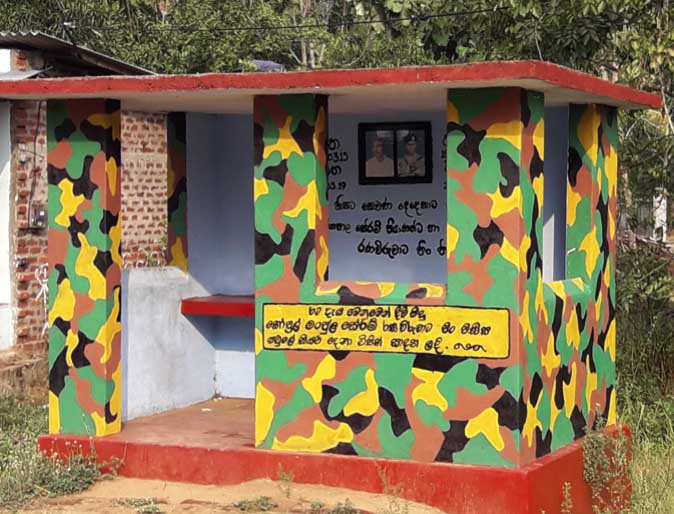
Image 4. A bus shelter in memory of a father and a ‘ranaviru’ or war-hero son, built by the family of the deceased. Such family or community-led public memorials are a common sight in the South. (Source: Radhika Hettiarachchi, 2016.)
Some of the particularly valiant, such as ‘Hasalaka Gamini’ are immortalised as statues.[7] However, civilian tragedies are less visible in State-led memorialisation except for a few examples like the Central Bank Bombing memorial.[8] This indicates that civilian tragedies have not captured the imagination of the people enough to warrant memorialisation, except in cases such as the Aranthalawe massacre of 33 monks or Gonagolla, where 54 villagers were killed, prompting reactions by the community or religious bodies.[9] Both these incidents, highlighting the cruelty of the LTTE, captured the imagination of the masses as significant events, partially due to the political ideologies and propaganda built around them. This stands in contrast, for example, to the massacre of 28 civilians just 5 months before the Aranthalawe massacre, in the same village, which has no memorial – not even as a tombstone to indicate where the mass grave lies.[10] As civilian massacres in the border villages grew frequent and commonplace, there were no ‘useful’ public narrative options available, except the failure of the government to protect innocents. Throughout the country, even some military families perceive an over-saturation of military memorialisation. There are many such memorials in Colombo and outside the capital. They are often constructed without any input from the bereaved families on where and how their loss should be represented. Each is created for a different purpose and use of memory, and often repeats the names of the dead on several memorials.
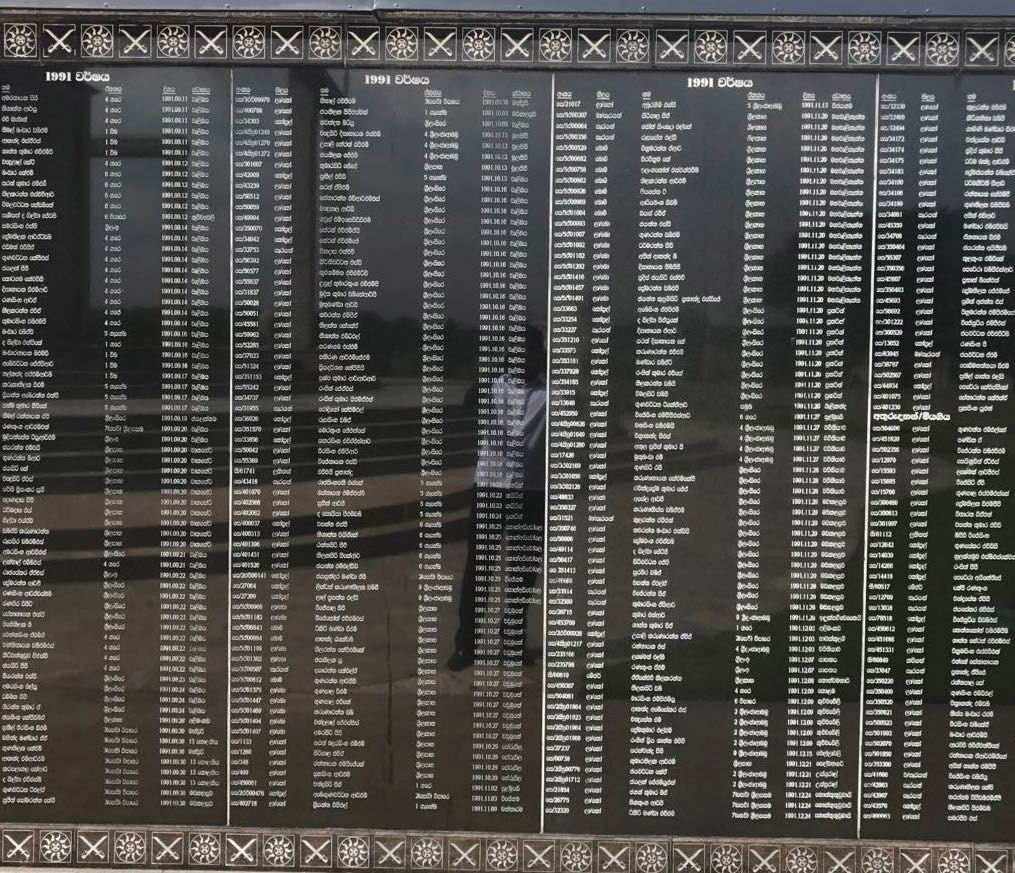
Image 5. War Hero memorial on the Sri Lankan Parliament grounds. Some of these names are repeated at more than one memorial dedicated to war around the country. Source of image: Radhika Hettiarachchi 2017
One deceased soldier’s wife said, ‘if a name is on several memorials, at which should the family grieve?’ This presents the praxis of oral history with an interesting opportunity – collecting and archiving the stories of individuals in their own words, with complete narrative control, prevents the duplication of memorialisation by the ‘other’. However, many different memorialisation projects as well as commissions appointed by the official mechanisms of transitional justice could end up duplicating the stories. As practitioners, this necessitates greater coordination between the various initiatives.
The physical representation of memory and symbolic reparations of public state-led memorialisation aside, at the community level, other forms of memorialisation exist. These have played a role in the culture and praxis of remembrance at local levels. This is referenced in the religious rites of memory – alms giving, ritual lighting of oil lamps, pujas, memorial services and offertory to orphanages and religious houses for worship.

Image 6. Pahan Puja, or offerings of light is a traditional method of memorialisation, prayer or offering ‘merit’ towards the souls of the departed in Buddhist culture. (Source: Dennis Candy, 2014, https://www.flickr.com/photos/denishc/31458326036)
These often are private remembrances or, at most, community-based activities. In spirit, however, this remains viable only as long as the stories of ‘those who know and those who saw’ are attached to the ritual, without which, when such people die, memory also dies. Even during repressive periods, art has always been a refuge for public memory even if these are artists’ representations and interpretations of memory. While there have been incidents of violent suppression of the arts, as a non-state form of memorialisation it has struggled, yet survived. The memorial exhibition for 1983 race riots by artist Chandraguptha Thenuwara is an annual event. The mural on the street for the murdered academic Neelan Thiruchelvam survived for decades before being tarred over recently (which of course, raises questions on guardianship, and who should speak out when public memory is causally erased).[11] The poetry, theatre, songs and writings of various artists, both Sinhala (during JVP insurrections) and Tamil (during the conflict), have survived although some artists themselves were violently stopped. The self-immolation of Jaffna poet Sivaramani, or the murder of poet Selvy Thiyagarajah, are examples of art on a collision course with LTTE (de-facto state) ideologies.[12] The murder of Richard de Soyza, an outspoken journalist, activist and actor who at the time of his murder in 1990 was in a controversial theatre production, is an example of State terror when its actions and motivations are questioned.[13]
My experience with the collecting, archiving and using of public histories for dialogue has lead me to understand the deep connections between memorialisation, catharsis, empathy and healing. The discussions at the dialogue sessions at village level indicate that the people themselves still believe that memorialisation (in whichever form) is needed for healing. Some indicated that the physical memorials enable the next generation to learn their history through the questions and curiosity that it may arouse for story-telling. Some indicated that it could contribute to a non-recurrence of violent conflict.[14] The South of the country yielded surprising responses to this question, with people indicating that rather than physical representations, non-physical memorialisation (the religious and ritualistic practice of remembrance) might be apt. They also suggested that remembering one’s ‘own’ specific losses, situated within the ‘local’, both normatively and geographically, would be more fulfilling. For them, this was seen as preventative of harmful or hurtful ‘national’ memorials to ‘victory’, especially when situated in the North that reminds all who look upon it that they ‘lost’. (The museum in the North dedicated to a Southern soldier – Hasalaka Gamini – was specifically mentioned).
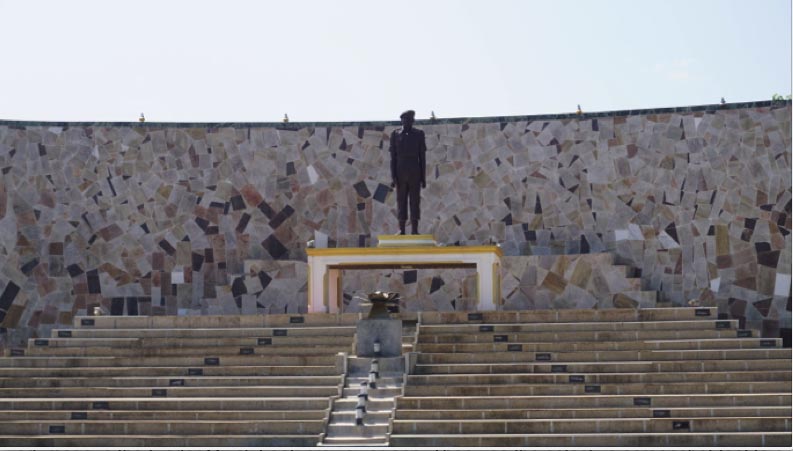
Image 7. The new memorial to ‘Hasalaka Gamini’, the hero of the elephant pass battle, who ran into an on-coming armoured LTTE vehicle with grenades, not only saved the day and many lives, but cemented him within the pantheon of southern heroes of the war. (Source: Radhika Hettiarachchi, 2017.)
This surprising statement, emanating from many places, indicates that the public does contemplate the potential threat to post-war peace and stability. They are aware that the persistence of the memorialisation of victory might arouse feelings of marginalisation and ‘not belonging’ within the Tamil community. As was common practice in the South, people thought the memorialisation should be ‘useful’ to the community, thus improving basic community infrastructure (such as water tanks, bus stops) while memorialising an incident. However, in the South, some did question the perceived over-emphasis of memorialisation of Northern experiences. Highlighting Southern experiences such as the violent suppression of JVP insurrections, or incidents such as the bombing of the temple of the tooth in Kandy by the LTTE, they believed that memorialisation needed to be ‘balanced’ out. Incidentally, some viewpoints from the North said that any attempt at proportional representation of memory ignored the prolonged and systematic suffering of the Tamil people. This highlights the challenges of the normative ‘equation’ of Northern experiences to the Southern experiences, ignores the nuances of the ethnic conflict, and the nature of subaltern narratives of a minority community.
For the Northern Tamils, who were denied memorialisation and grieving, post-war,[15] physical memorialisation was necessary, not only as symbolic reparations, but also as a public space to grieve. During public consultations of memorialisation held in the North during the Community Memorialisation Project, most participants cited the need for physical memorials as a reminder to future generations of the specific experiences of violent conflict as a minority community.[16] However, many claimed that they had no faith or trust in a Southern government to be able to ‘deliver’ memorialisation, when it was a Southern government force that destroyed their places of memory – which in itself is contradictory as the people were demanding symbolic reparations from the State. Within a continuously militarised context, the inability to memorialise ex-combatants or civilian casualties (of indiscriminate military or LTTE shelling), was also seen as a travesty of justice. The Northern demands also extended to requests for incidents of violence against the Tamil people to be represented through national memorials in the South, so that ‘they will know what happened here’. This was a need for recognition and acknowledgement of loss as well as government accountability. The government’s focus on the rhetoric of transitional justice has created a sense of disillusionment on the ground because there were limited results, particularly in terms of information on the disappeared.[17] This is also clearly a gap in memorialisation – how does one memorialise the missing? Where do they fit within the larger narrative of memory?
In framing memory and memorialisation as publicly accessible life-experiences and eye-witness accounts, there is at times a visible struggle for memory: to own it, to forget it, to reconfigure it with today’s needs in mind, the pedagogy of public history, the political ideologies of memorialisation as ‘history’ and, of course, the tragedy of the commons as public history. There is no time limit for memorialisation, although collecting life histories within the eye-witness period is crucial for the future generations should they choose to represent these public histories as memorials. However, will they become derelict structures over time, bereft of guardians? Who should maintain it? How will multiple, outsider and contested narratives be represented within it, if those that can tell its many stories are no more? I found that, when collecting narratives three years after the war ended, there was an overwhelming need, regardless of potentially negative consequences, to ‘tell’ their stories. When the Herstories project began, it was to collect 100 stories of women in order to feminise the narratives of history, but due to demand, 285 stories were collected. Three years later, collecting people’s narratives for memorymap.lk, I found that ‘memory’ was deliberated and negotiated within a transactional framework – what could sharing one’s history give one in return in terms of economic benefit or justice, or what could it take away in terms of security? Within this context, I question if it is too early for memory to simply be memory, without the uses it is ascribed by civil society or the politics and framework of transitional justice within which it often falls. Perhaps, the end of the war is still too recent, and people’s needs too utilitarian to preserve memory as a public good and to ‘engage’ it for peace-building. As security concerns or socio-economic needs take precedence over the need for unadulterated memory, some simply want to ‘forget’[18] or alter or omit parts of their own narratives. In this light, is it an imposition on those who ‘own’ the memories to be forced to document and archive? As a practitioner, memorialisation as public history remains a challenge: should memorialisation be organic and a decades-long process, which may or may not result in the prioritisation (and loss) of some public histories over others, due to the hegemonic politics and ideologies of the day? Or even as I struggle with the ‘projectisation’ of memory work, should practitioners create opportunities for memorialisation, without which public histories could disappear or be altered with time?
________________________
Abbreviations Used
- JVP: Janatha Vimukthi Perumana is a communist and Marxist-Leninsist party and political movement in Sri Lanka. Involved in two armed uprisings against the ruling governments in 1971 and 1987-89, the organisation entered democratic politics when it participated in the 1994 parliamentary elections. It has been a third party since then.
- LTTE: The Liberation Tigers of Tamil Eelam or the Tamil Tigers was a Tamil militant organisation based in northeastern Sri Lanka, which waged a secessionist nationalist insurgency for the cause of an independent state of Tamil Eelam. Their campaign led to the Sri Lankan Civil War from 1983 to 2009.
________________________
Radhika Hettiarachchi is an independent researcher, curator and practitioner of peacebuilding and transitional justice work with over 12 years of experience working primarily in Sri Lanka. She uses oral history, facilitated dialogue and the arts as channels for creating public discourse on conflict, transitional justice, democratic values and non-recurrence of violence. She conceptualised and curated the Herstories Project and is currently Team Leader of the Community Memorialisation Project. Radhika was the curator of the Colomboscope multi-disciplinary arts festival. Radhika has a BA (Hons) in Communications Theory and English from York University, Canada and an MSc in Development Management from the London School of Economics and Political Science, U.K.
___________________________________________________________
[1] Huffpost, https://www.huffingtonpost.com/eric-margolis/sri-lanka-the-last-battle_b_207713.html (accessed 12 October 2017)
[2] The Herstories Project is implemented together with Viluthu Centre for Human Resource Development and the Community Memorialisation Project with the memorymap.lk archive is jointly implemented with Search for Common Ground, Sri Lanka
[3] TamilNet, 11 August 2011 https://www.tamilnet.com/art.html?catid=13&artid=34299 (accessed 14 October 2017)
[4] An example from the archive Memory Map http://memorymap.lk/index.php/display/singleMemoryView/143 (accessed 13 October 2017)
[5] BBC, 7 March 2011 http://www.bbc.com/sinhala/news/story/2011/03/110307_jaffna_cemetery.shtml (accessed 15 October 2017)
[6] A further note on Maaveerar Naal (post-editing of this article) – although the memorialisation has been restricted after 2015, 2017 has proven to be different with larger numbers of Tamils in the north coming out with posters as well as expressions of public grief even referring to their dead, as heroes, which was unthinkable in such public expression post war. The impact of such expression is yet to be seen – NewsIn.Asia, 28 November 2017 http://newsin.asia/lankan-tamils-come-shell-observe-lttes-heroes-day/ (accessed 1 December 2017)
[7] InfoLanka, 13 August 2013 http://www.infolanka.com/news/IL/1641.htm (accessed 12 October 2017)
[8] Business Times, http://www.sundaytimes.lk/120205/BusinessTimes/bt38.html (accessed 15 October 2017)
[9] Amazing Lanka, http://amazinglanka.com/wp/monument-of-aranthalawa-massacre/ (accessed 13 October 2017)
[10] Memory Map http://memorymap.lk/index.php/display/view_photoEssay/11 (accessed 13 October 2017)
[11] Groundviews, http://groundviews.org/2012/08/05/obliteration-of-road-painting-commemorating-neelan-tiruchelvam-on-kynsey-road-with-photos/ (accessed 12 October 2017)
[12] Wikipedia, https://en.wikipedia.org/wiki/Chelvy_Thiyagarajah (accessed 10 October 2017)
[13] Colombo Telegraph, 18 February 2012 https://www.colombotelegraph.com/index.php/richard-was-murdered-22-years-ago-remembering-richard/ (accessed 13 October 2017)
[14] An example from the archive – Memory Map http://memorymap.lk/index.php/display/singleMemoryView/147 (accessed 12 October 2017)
[15] Asia Times, 26 July 2017 http://www.atimes.com/article/silenced-stones-mark-hard-path-sri-lankan-reconciliation/ (accessed 12 October 2017)
[16] An example from the archive – Memory Map http://memorymap.lk/index.php/display/view_photoEssay/14 (accessed 15 October 2017)
[17] An example from the archive – Memory Map http://memorymap.lk/index.php/display/view_photoEssay/16 (accessed 15 October 2017)
[18] Memory Map, http://www.about.memorymap.lk/2017/07/27/challenges-and-opportunities-for-memorialisation-in-sri-lanka-grassroots-reflections-from-the-community-memorialisation-project/ (accessed 15 October 2017)


